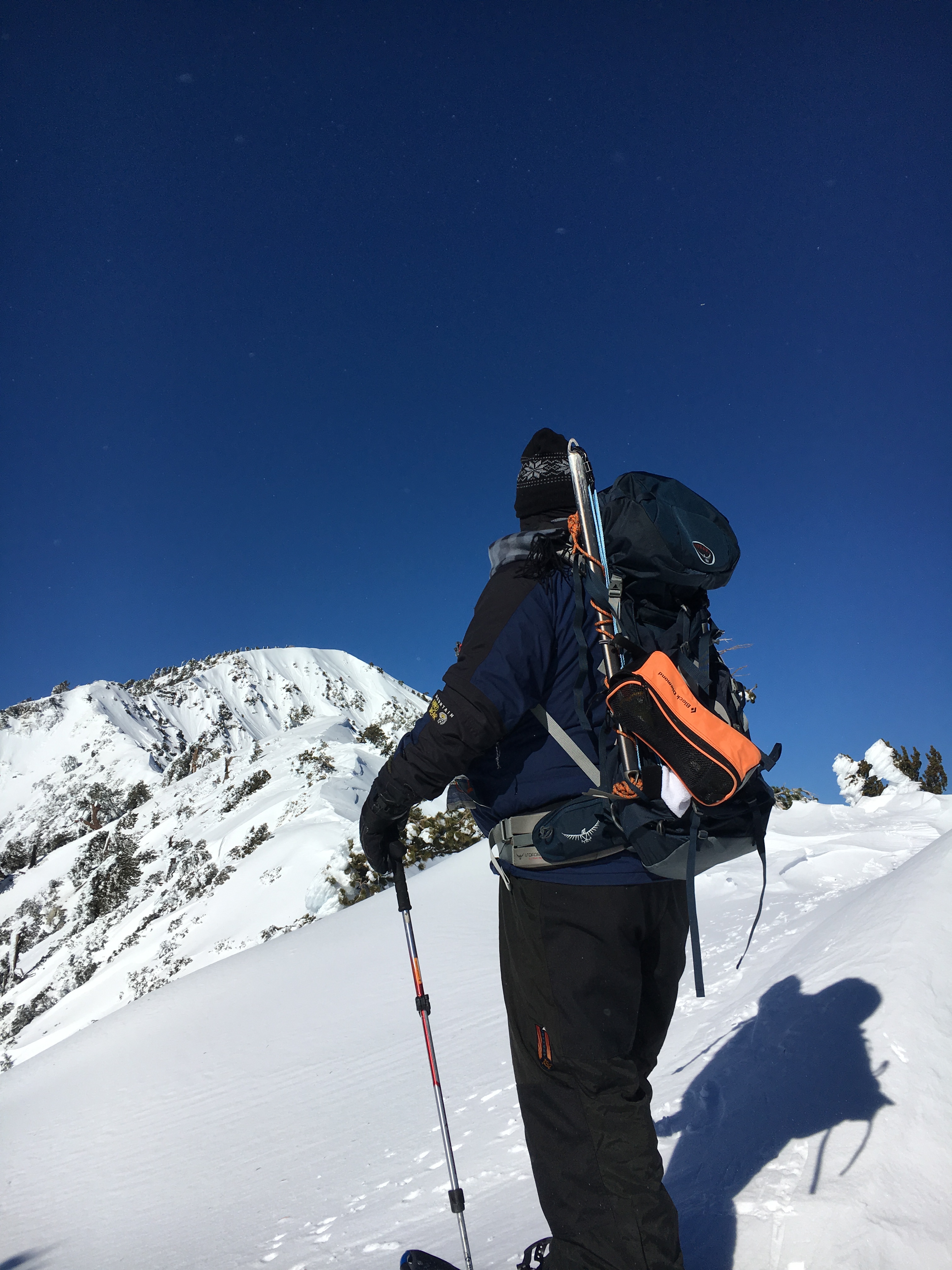MSR Lightning Ascent

I go more into detail about snowshoes here but if you’re looking for the most traction you can get in steep terrain, the MSR Lightning Ascent are it.
Specific Product Links:
Traction:
Traditional snowshoes have round frames whereas these have a narrow, but aggressive bar frame. What they may give up in float they more than gain in traction. Traditional snowshoes also have crampons – spikes – under the toe and heel but the entire frame is a crampon here. Uphill traction is incredible. Downhill is good, better than most, but all snowshoes will still have a tendency to act like a ski due to the uplifted front end.
Bindings:
My Redfeathers have two straps on the shoe whereas these have four. The newer versions have more of a mesh full coverage binding but look to be as secure. Part of the binding is the hinge, which allows you to rotate your foot separate of the snowshoe, important for walking. These have an actual hinge whereas traditional hinges just flex the deck or straps around the deck, which is simple and reliable but inherently less flexible. This is a double edged sword because extra movement makes walking easier, but it also means the back of the snowshoe can more readily drag in the snow. Means you have to high-step more in the deeper stuff.


Floatation:
Speaking of walking in the deeper stuff, I’ve found that these give me significantly less floatation than the Redfeathers which are longer and wider. That said, I far exceed the max capacity of any snowshoe so take this with a grain of salt. I went for a hike in Colorado with some friends and they just walked up the trail while I was still sinking and postholing in comparison.


Special Features:
A huge advantage these have over other designs is the ingenious yet simple Televator feature, a simple bar at the heel which flips up (with relative ease using your hiking poles, nigh-on impossible bare-handed if you’re not flexible). This makes walking up steep terrain more like walking up stairs. The security this affords is impressive. Impressive, that is, until you get to flat ground and then they’re miserable instantaneously. Seriously impressive how quickly they become an impedance, but one I’m very glad to have. Looks flimsy but has held up to my weight and abuse for several seasons, as has the entire snowshoe.
Another feature, if extra cost, is the extra float tail, necessary only because MSR only offers these up to 30″ whereas other brands go to 36″, a significant difference. I think this is a failure on their part and one shouldn’t have to pony up yet more money for a design limitation. The mounting system is nifty, though. There’s a little hook on the rear of the snowshoes and a pin on the tail. Affix the pins in the hooks and stretch the rubber band over the rear. I worry that the rubber will stretch out but to date it hasn’t. The only issue is that this lengthens the shoe with no corresponding addition in width so the heel tends to drag a bit and the toe tends to want to dive deeper than the heel. It’s not a dramatic issue in the types of terrain in which these excel, but if you’re going through powdered sugar to get to the slope you’ll notice it. However, it is a nice feature for normal humans who just need a little more float for those conditions but not all the time. For me it’s an always thing.


Final notes:
Overall these are excellent snowshoes with great traction. Their use case will be determined by your terrain preferences. Note that sometimes what seems like a great place to use these, such as the San Gabriels right after a storm, can often be quite the opposite. Steep side-hills, which snowshoes don’t excel at and narrow trails are difficult and sometimes post-holing can seem preferable. But when they’re needed they open up beautiful worlds otherwise not reachable.





